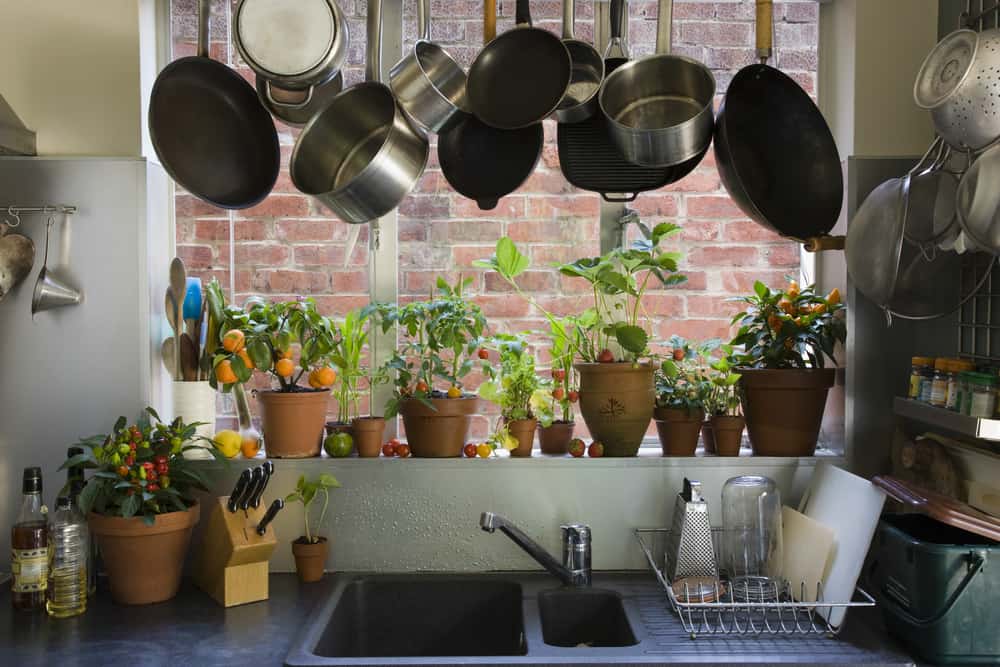Shake That Weight ™ • 25th March 2015 • 9 years ago
The Best Herbs for Indoor Growing!

At Fresh Approach we believe that one of the biggest advantages to a healthy lifestyle is eating fresh. And what could be fresher that ripping up some herbs from your window sill and throwing them in to that salad, sauce or even grasping a chunk to throw in to that new experimental juice you have been making.
There are a surprising number of herbs that will thrive as indoor plants. All it takes is a bright space, a few well-chosen varieties and a spirit of adventure.
NOTE: To ensure success, we recommend starting with healthy plants rather than seeds. Established plants put you months ahead (sometimes even a year) compared with plants started from seeds, plus they offer you a wide range of varieties for growing indoors.
Basil
A variety of mint, famous for its involvement with Tomatoes, this is a versatile and much required herb for your window sill. Pick the leaves as desired and more are sure to grow.
Chervil
Also known as French parsley as it is similar in appearance and taste, with delicate overtones of aniseed. To harvest, snip the outer leaves and stems, or gather a bunch of sprigs together and cut off an inch or two above the soil.
Chives
A grass like perennial herb with a delicate onion flavor. ‘Grolau’ chives is a prolific producer for window sill growing.
Cilantro
Also known as Chinese parsley, Cilantro has a distinctive parsley/sage/citrus-like flavour. Grows quickly, but once harvested it does not re-grow.
Dill
Aromatic annual best grown for its leaves when grown indoors. ‘Fernleaf’ dill is a compact variety ideal for growing indoors.
Marjoram
This Mediterranean native belongs to the oregano family, but its flavour is distinctively sweeter and more delicate. Sweet marjoram is often grown in pots indoors
Mints
Peppermint and spearmint are good choices for growing in pots. ‘English’ mint is a well-behaved variety of spearmint. Be sure to give mint its own container as it can easily overtake other herbs.
Oregano
Greek oregano delivers true authentic oregano flavour. Harvest leaves often to encourage new growth. Oregano remains productive for up to two years and should be replaced when plants become woody.
Parsley
Both Italian flat-leaf and curly-leaf parsley excel when grown indoors. The Italian variety of this biennial herb is often favoured for its robust flavour. Cut the outer leaves when harvesting. This will spur new growth from the centre and keep parsley remaining productive for several months or more.
Rosemary
This perennial comes in both trailing and upright forms. Even though rosemary enjoys drier conditions, it’s imperative that the soil is never allowed to dry out completely or the plant may die.
Sage
For container growing, try 12-inch-tall dwarf, or non-flowering ‘Berggarten,’ a vigorous but compact low-growing culinary strain. Dwarf garden sage offers the same flavour as garden sage but grows only 10 inches high.
Thyme
Lemon thyme and French thyme are excellent culinary varieties. Change it up with creeping ‘Oregano’ thyme, with its great thyme flavour and oregano undertones. Thyme likes full sun but will grow in an east- or west-facing window.
Tarragon
A dormant period in late fall or early winter is essential for tarragon to grow indoors. Pot up a mature plant from your outdoor garden and leave it outside until the leaves die back. Bring it to your coolest indoor spot for a few days, then place it in a south-facing window for as much sun as possible.
Lemon grass
Technically, you don’t even grow lemon grass, in that it’s not planted in soil, making this one incredibly easy herb to keep in the house. When buying a stalk at your local market, look for plenty of stem and make sure the base is intact. Trim the top and place the stalk in a couple inches of water. The stalk will produce roots and dozens of new shoots.
Helpful Growing Tips
All you’ll need to start your new indoor garden is a large sunny window. Try to choose a location with temperatures between 18 and 27 degrees with good air circulation. Your window sill could unfortunately be too cold in winter.
Most culinary herbs grow best with at least five to six hours of bright light: mint, parsley and chives do fine with four to five. Keep in mind that natural light is more limited and less intense in winter.
Almost any pot or container at least 6 inches or larger can be used for growing herbs as long as it has drainage holes. Choose the largest pot possible to provide more room for growing roots, which will give you a bigger plant to harvest from.
Use a fast-draining potting mix as garden soil will compact in containers and smother plant roots. Look for a premium mix that includes lightweight ingredients such as perlite or vermiculite to help loosen and aerate the final mix.
Water needs will vary depending on the size and type of plant, the size and type of container, and the time of year. Plants are dormant or growing less actively during winter when light levels are lower and therefore require less water. Allow the soil to dry slightly for most herbs; keep the soil slightly moist for basil, chives, mint and parsley. The best way to tell when a plant needs water is to stick your finger one inch into the soil. If the soil feels dry, it’s time to water.
Once herbs start actively growing in spring, you’ll need to feed them with a liquid fertilizer every four weeks. Or, organic fertilizer granules that you scratch into the soil surface every other month can be used instead of a liquid fertilizer.
Help indoor herb garden to grow strong by checking plants each year and replacing those that are short-lived or have become woody. And don’t forget the best part, which is harvesting and using your indoor herbs.








